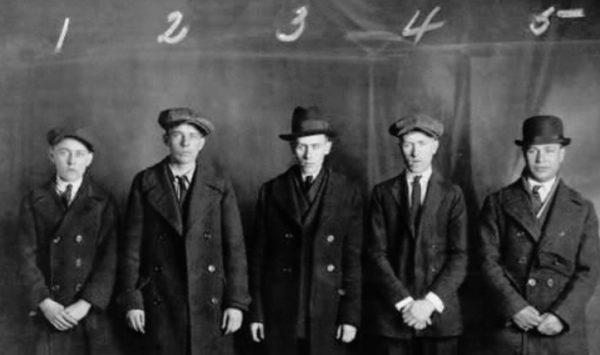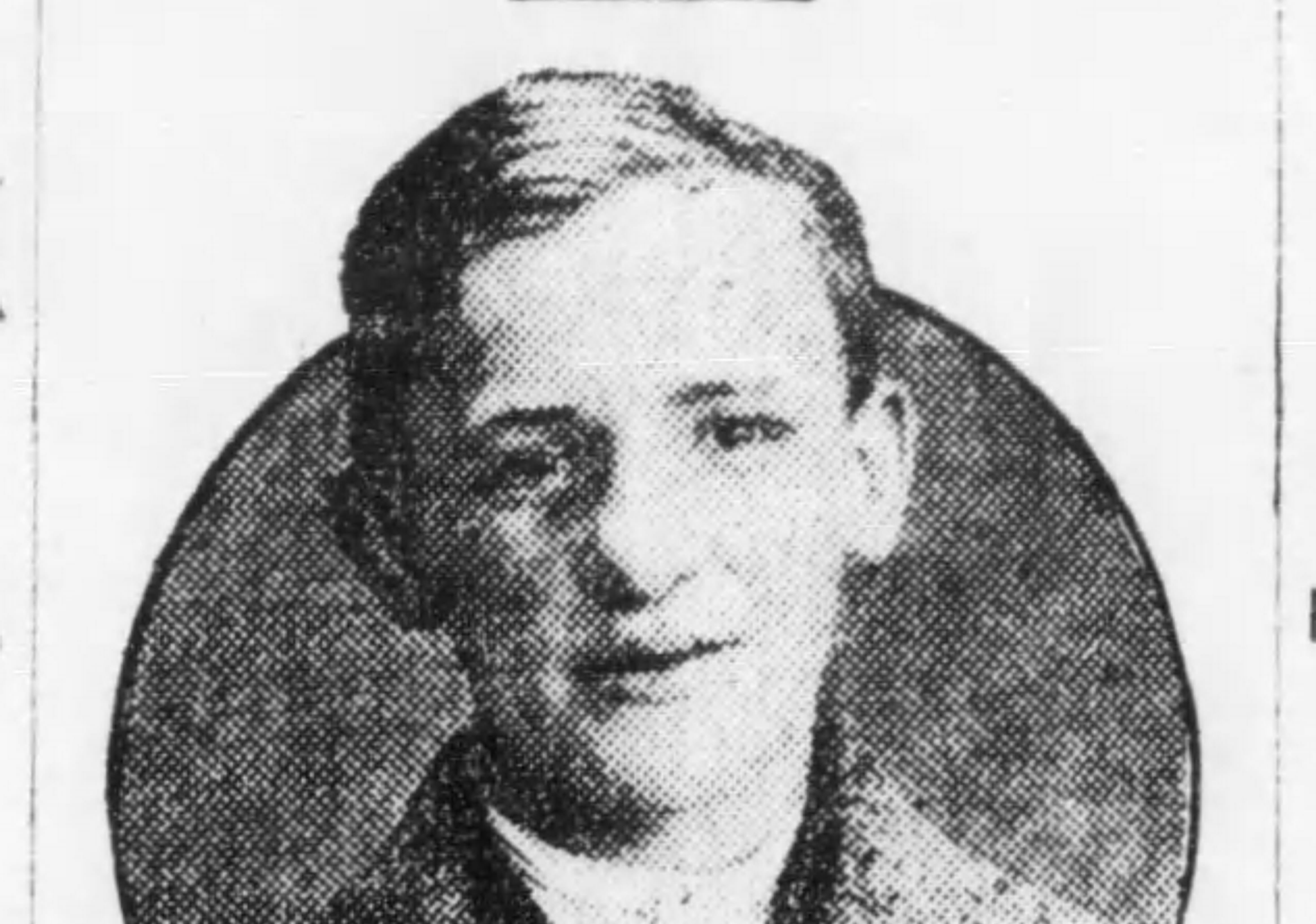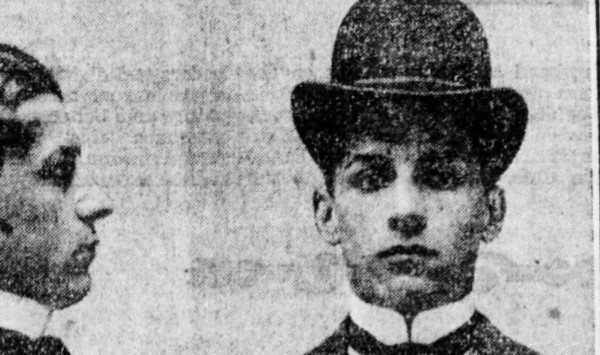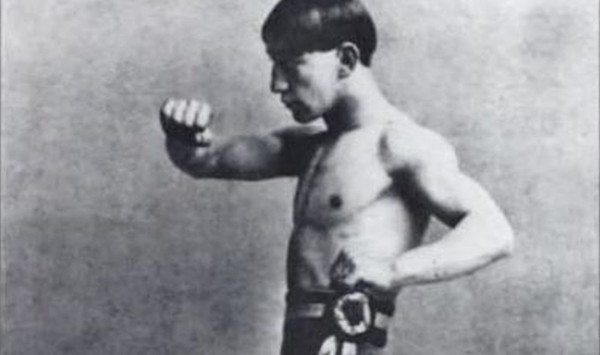A GANGLAND SLAYING AT 162 COURT (1922)

******************************************************************************************************************************** Brownstone Detectives investigates the history of our clients’ homes. The story you are about to read was composed from research conducted in the course of one of those investigations. Do you know the history of YOUR house? ******************************************************************************************************************************** Above: The “Navy Yard Gang,” (l to r), (1) Stephen Collins, (2) John Keogh, (3) William Evans, (4) Frank Evans, and (5) Pellegrino Mucci On a frigid February evening in 1922, three young men stepped into the dimly lighted drugstore at No. 162 Court street in Cobble Hill. Druggist Paul J. Gillman, looking up from behind his counter, suspected something was up – the men, who seemed to be barely out of their teens, moved with a sense of purposelessness filled with less-than-good intentions. Gillman noticed as the first young man, who stood by the case in front of his prescription counter, pulled something from his coat and then began to walk towards the passageway leading to the place behind the counter where Gillman stood. “I just stood at the entrance and pointed the gun at him,” the gunman, William Evans, 23, of No. 24 Fort Greene Place, later explained to the police. “I told him to put his hands up.” The night, which was planned to be spent on a simple hold-up, would not turn out as the members of the “Navy Yard Gang” had expected, however, as Gillman would not be encouraged by what he certainly thought were young boys attempting to get away with a prank. Gillman, not […]
THE BOY WHO COULDN’T MEND (1914)

Some criminals just cannot reform. Young Raymond “Angel Face” Beck was a good example. 100 years ago today, the 14-year-old Brooklyn boy was pawning stolen silverware on Atlantic Avenue when the police happened into the pawn shop. NO JUVENILE ASYLUM BUILT COULD HOLD THE “ROBBER CHIEF” Known mostly for his escapes from “prison,” at the time, Raymond Beck, “son of well-to-do parents of 7 Cypress Avenue,” and a self-described “Robber Chief,” had broken out of the Dobbs Ferry Juvenile Asylum a total of four times by 1914. Each time young Beck, “blue-eyed, fair-haired and innocent-looking,” made a B-line directly for Brooklyn and the houses of new victims. Beck would make a career of illegal activity and escaping asylums and reform schools throughout his life. The newspapers are replete with his stories of burglaries and escapes at least through the mid-1920s, when he would finally disappear from the news. But, for the majority of this period, whenever the name Raymond Beck was mentioned in the papers, Brooklynites locked their doors and hid their valuables, as there was a good chance they’d end up in his possession. “ANGEL FACE” RETURNS TO BROOKYLN After the “boy burglar” had most recently been paroled in 1914, he ended up in Brooklyn once again – this time in the parlor of Edward A. Peterson of 567 Eighth Street in Park Slope. Now, Peterson did not know “Angel Face,” but that was not only because the two had never been introduced. Beck simply arrived at Peterson’s home […]
PARDONED THAT HE MAY HANG (1905)

******************************************************************************************************************************** Brownstone Detectives investigates the history of our clients’ homes. The story you are about to read was composed from research conducted in the course of one of those investigations. Do you know the history of YOUR house? ******************************************************************************************************************************** He was a “desperate young crook,” according to the Governor of New York. But the governor went ahead and pardoned him anyway. Charles Bassett, 19, of Brooklyn, had committed enough crimes that the State decided that he needed to be put away for eight years in Sing Sing. Amongst other felonies, he “broke into Nicholas Weinberg’s jewelry store on Fifth Avenue” and “assaulted Jeweler Bridger and stole his diamond on Fulton Street.” And these were the crimes that they knew about. Bassett was a bad apple – plain and simple. But Governor Higgins in an agreement with Connecticut’s governor, made a deal that scared and surprised everyone. And in the process, he practically opened Bassett’s cell door himself, escorted him through the yard, and watched as he walked out the prison gates. ROBBING PETER TO PAY PAUL These listed crimes, however, were but mere child’s play when his solitary darker and fouler crime was taken into account. As all good thieves do, Bassett had a criminal network to which he belonged. As soon as there was a chance to make a quick buck without having to do work of any kind, Bassett could smell the opportunity. In Bridgeport, Connecticut, a $20,000 haul was the glimmering bauble that lured Bassett’s attention. It […]
“TOMMY” O’TOOLE IN SING SING AGAIN? (1915)

Burglaries took place with great regularity in Brooklyn 100 years ago. Skimming through Brooklyn Daily Eagle archives and reading newspapers from that period, I come across them all the time. They usually involve males, between the ages of a 16 and 24, just about all of whom have previous criminal records, and who end up getting sent “up the river” to Sing Sing. Yesterday, while scanning the papers, a small story on a burglary that took place almost 100 years ago – to the day – caught my eye. Why? I cannot say. It was a rather pedestrian article, but it caused me to wonder at what happened to the subject, one William O’Toole. Being in the detective business, there are always ways of finding out these things. Being a history detective, though, it gets a little tougher and requires some more than usual digging. But I was ready for digging yesterday, and so I decided to follow my leads. THE STORY The offense took place on 18 May 1915, at 864 Nostrand Avenue. O’Toole was the unlucky one to get caught as an accomplice got away. Hailing from Manhattan, according to the piece, he was young man of 22 years at the time, referred to in the article as an “Old Offender.” His record of offenses was three deep, having already served time in Elmira, Sing Sing, and the State Penitentiary. This time he was collared for stealing $46 out of a strong box belonging to “Miss Mary Maddren.” […]